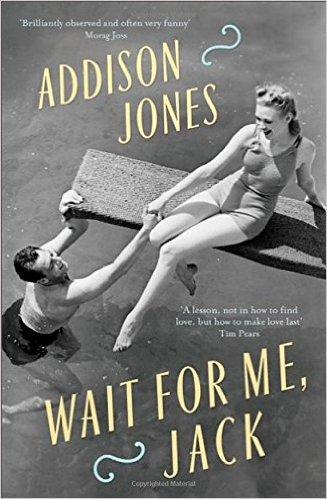 I guess most writers have a couple of soapbox issues which are just as relevant in their capacity as readers. One of mine is the trivialisation of writing about love, especially of books by women. Last summer I wrote this article rebutting those attitudes – it really wasn’t hard to do – and defending love as a serious subject worth reading and writing about.
I guess most writers have a couple of soapbox issues which are just as relevant in their capacity as readers. One of mine is the trivialisation of writing about love, especially of books by women. Last summer I wrote this article rebutting those attitudes – it really wasn’t hard to do – and defending love as a serious subject worth reading and writing about.
Even amongst those who enjoy novels about relationships, tastes vary widely as you would expect, and my taste is not the most fashionable or catered to in the current market. I understand the appeal of romantic escapism or sinister drama – but what interests me are characters and situations resembling real life, which I can believe in. Wait for me, Jack by today’s guest Addison Jones, is featured in my spring Sofa Spotlight because it achieves this so well, whilst at the same time brilliantly evoking a fascinating period of 20th century American social history which is easily glamorised from afar. It is this aspect that Addison joins me to discuss today (my review follows):
There are times in history, perhaps like now, which seem pivotal. The changes come fast and their repercussions are instant and far ranging. Of course, these times impact on us – they affect our jobs, our towns, and in the most fundamental way, our lives at home with our families. Wait for Me, Jack is my study of the post war generation in California: the couples who married in the late forties and early fifties. I am fascinated by how the cultural changes impacted on individual lives, and specifically on marriages.
My grandparents left school at age twelve; this was considered normal. My father missed his high school graduation because he’d enlisted in the army on his 18th birthday. My mother’s background was much the same. No one considered themselves poor, but by today’s standards they certainly would have been. Social mobility was almost unheard of. Imagine then, the United States after the war, when all those young men returned – not to their old lives, but to the offer of a fully paid college education. Some did not take it up. It represented too steep a challenge. But my father did accept it. University classrooms, for the first time, had the children of truck drivers and milkmen sitting beside the sons of lawyers and doctors.
Sounds idyllic and democratic, doesn’t it? But, as explored in my novel, it was not an easy time for anyone. The blue collar parents sometimes felt rejected by their children, now climbing into the middle class. There was a sense that getting a college education was arrogant. Sons and daughters who dared to better themselves, risked hearing: Too good for us now, are you? And sometimes that would feel true. Formerly close family units sometimes broke down, as the new college student felt their values shifting away from the ones they grew up with. This led to a social group not often discussed, the in-betweeners. Those who had left one social class, but by virtue of birth would never be fully accepted in another. Life-long loneliness and a sense of not belonging would have been the norm for many. For some, like Jack and Milly in the novel, this would have led to a closing of ranks within the nuclear family. Yes, these families had to adopt a sense of privacy and isolation – which had advantages and disadvantages.
Annoying relatives could be ignored now. They could enjoy materialistic advantages none of their families had experienced before. But to do all this, they had to re-invent themselves, which took determination and stamina. Their new middle class selves had to be on show every day for the rest of their lives. Imagine the energy it would take to learn a whole new set of manners for a dinner party? Think of the strain, as one learned to mimic middle class attitudes and poses? That is why it was extra important for those marriages to be harmonious – because inside the family home was probably the only place they could relax and be their old selves. There is no escaping the fact, the selves we were as children remains firmly imbedded in our psyche, no matter how strong the urge to change.
The trouble, of course – and this is the heart of Wait for Me, Jack – is that marriage is rarely harmonious. This was especially the case in the post war years, where living together was very rare, and virginity was something to barter with. You want me? Give me a wedding ring. In Jack and Milly’s case, it wasn’t so much a sexual issue, as basic incompatibility. Their quite different personalities grated against each other all their sixty years of marriage. This should have made them hate each other and ultimately part – but in their case, love remained despite it all. And this is the pulse inside the heart of this novel. What is love when it feels like hatred sometimes, and irritation often? What holds an odd couple together, year after year? Whatever married love is, in this case, it works. At least, it lasts – and maybe that is as good as it gets for anyone.
Thank you to Addison for this revealing take on the world inhabited by her characters and the pressure that often goes with opportunity.

This emotionally intelligent novel has joined the ranks of my favourites depicting marriage; for those who know them, I was struck by qualities it shares with The Corrections by Jonathan Franzen (which I re-read last year) and An Amateur Marriage by Anne Tyler. Structurally it reminded me of Peter Nichols’ excellent novel The Rocks, with a challenging order of play covering sixty years but narrated in reverse, which completely changes the experience of reading. The portrayal of marriage is far from rosy, as you will have gathered; there’s no escaping the fact that it is often uncomfortable, painful and pessimistic. It certainly does nothing to rehabilitate the dismal perception of long marriages (something I find really sad) but that said, there will be few couples past the honeymoon period who don’t recognize anything here. As the product of similarly mismatched parents I found the tension and conflict excruciatingly well observed, but if all this sounds a bit on the depressing side, it is balanced by a strong sense of the author’s wisdom and compassion, and so much warmth and wit in the writing and characterisation that it turns out to be a really enjoyable read. Although it covers a much longer period, in tone and atmosphere it has a lot of the ingredients that made Mad Men such a hit, not least its interrogation of the American Dream and the price tag attached to it.
*POSTSCRIPT*
If you’re interested in the phenomenon of the American Dream, I highly recommend this current exhibition, which invites the increasingly frequent conclusion that it might actually be over…
NO POST NEXT WEEK
It’s been an incredibly busy and sometimes stressful three months for me, in which I went from deciding to publish Paris Mon Amour in paperback to sending it to print this week. (Can’t quite believe I’ve pulled it off…) I could do with a break and am really looking forward to a week in Paris researching my next novel and my family joining me for Easter weekend. On my return, there will be a competition to win signed advance copies when I take delivery on 21 April. Enjoy your break!
Advertisements
